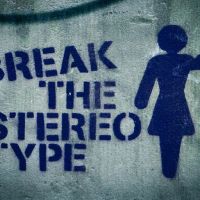Ove. It’s a name. If you are American, you’d probably think it’s a strange name. I thought the name was supposed to be Love without the “L.” Turns out, it’s a real name, in Sweden.
The Set Up
 Why am I looking up this name “Ove”? Because a tmy book club this month we read A Man Called Ove. I mean, the title itself says his name is important.
Why am I looking up this name “Ove”? Because a tmy book club this month we read A Man Called Ove. I mean, the title itself says his name is important.
It’s about a man who lost his love, in more ways than one. It was written by Fredrik Backman originally in Swedish and translated to English. Thus why I originally thought the name was a translation of the Swedish word for “Love” without its first letter (i.e., lost part of love). Turns out the name Ove being so close to “love” in English is just serendipity, although it’s a great example of it.
It turns out Ove actually means “edge of a sword” or “terror.” Well, that sounds about right. I guess the name is important.
The Story
Discussing names and their meanings was just one of the many topics at my monthly book club meeting. Those of you familiar with my blog know that I have the best book club of all time. I hit the book club lottery. That means we read great books and have great conversations. For A Man Called Ove, our discussion, as always, was enlightening and enjoyable. I always learn something.
Based on my book-versation, this is what I discovered were my 5 favorite things about this book.
My 5 favorite things about A Man Called Ov e
e
1. Ove
The characters of this book really make it shine. They’re fully fleshed out and feel very real. However, it is named after one man for a reason. That man is Ove. He’s not meant to be particularly likable, at the beginning. You’re supposed to think he’s rigid, crotchety, unreasonable. You aren’t supposed to like him.
But I did. I like these kinds of characters. They’re real. And I have have this pesky problem of seeing the good in everything, even characters. Therefore, even from the outset, when I wasn’t supposed to like Ove, I did. I found his crankiness charming and cute.
As the story progresses, everyone learns to love Ove. Behind his gruff exterior is a human being better than most of us. It’s a story about not judging a book by its cover. And a well told one at that.
2. Simple Storytelling
The book is really a series of short stories about Ove woven together to create a narrative. These are snapshots of his life. Everyone has friends who tell the same stories over and over. You know their stories. You can recite them. They probably know yours. These are the stories of Ove. The ones, if he told stories, he’d tell over and over again. The funny stories. The poignant stories. The stories that stick in your brain.
3. The Cat
 Like in the book by the same author, My Grandmother Asked Me to Tell You She’s Sorry , the animals in the book are more than they seem. In that book, it’s a dog, in this book, it’s a cat. Now that I’ve read two of his books, I think the use of animals to imbue meaning is one of the best traits of Backman’s storytelling.
Like in the book by the same author, My Grandmother Asked Me to Tell You She’s Sorry , the animals in the book are more than they seem. In that book, it’s a dog, in this book, it’s a cat. Now that I’ve read two of his books, I think the use of animals to imbue meaning is one of the best traits of Backman’s storytelling.
To some in my book club, the cat represented the wife. I could see that interpretation. It makes sense. To me, the cat was Ove himself, left out in the cold, alone, hurt, wounded and unwelcome. Then, slowly, like the cat, Ove becomes part of something again. He heals. He comes in from the cold.
4. Predictability.
What ever happened to predictability? (The milkman. The paperboy. Evening TV.) If you grew up in the 80s or 90s or are a fan of Netflix reboots you know this line. It’s from Full House. I haven’t seen the reboot, but the show is iconic as are the words to the theme song. Many people thrive on predictability, as does Ove. To Ove, routine is happiness. When that routine, that predictability of life is gone, it hardly seems worth living to him anymore.
The predictability aspect of the story reaches further than just Ove’s proclivities. The book itself is predictable. Nothing that happens is really unexpected (until a small twist at the end). However, like Ove, you wouldn’t want it any other way. In this book, predictability is happiness, it’s laughter, it’s tears.
5. Dark humor.
 You wouldn’t think a book about a man trying to commit suicide could be funny. And, especially with the criticisms of Netflix’s 13 Reasons Why and highly publicized recent suicides, it’s not something to be taken lightly. However, this book uses dark humor to remind us that even when all seems lost, there is a reason out there to keep on living.
You wouldn’t think a book about a man trying to commit suicide could be funny. And, especially with the criticisms of Netflix’s 13 Reasons Why and highly publicized recent suicides, it’s not something to be taken lightly. However, this book uses dark humor to remind us that even when all seems lost, there is a reason out there to keep on living.
Humor often casts a different light on sentiments that can otherwise fall flat. Saying “there is always something to live for” is very different from showing it through writing and then enhancing that with humor. Humor provides a levity to absorb the impact of such a weighty topic.
The verdict.
The bottom line: I liked this book. I’d recommend it to others. It can be a little slow at times, but it has that Fried Green Tomatoes kind of feel – dark topics tackled via humor and quirky characters. When it’s done well, it’s really done well. And I think this one is done pretty well.
And if you don’t want to read it, there’s a movie too. Although I’d bet the book is better, it usually is!











Leave a comment